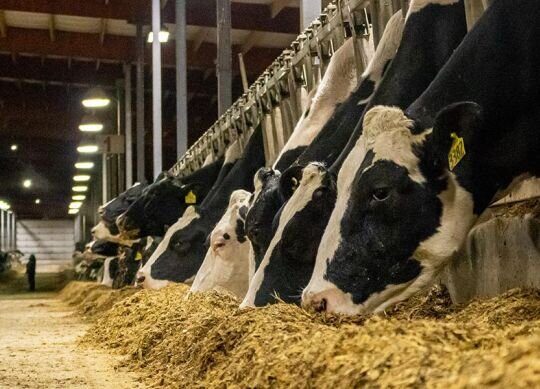Using a Feed Additive Audit to Control Feed Costs
When starting the audit, take each ingredient and look at it through a magnifying glass. Be careful not to forget that many feed additives have become key to maintaining profitability on the dairy, so these audits are not just about lowering costs. Auditing a ration is more about ensuring a balance between price and performance. Here is the step-by-step audit process.
Auditing feed additives
1. Why was the additive added to the diet? Does that issue still exist? This question is best answered through good records around the nutrition program. You can more effectively answer these questions if you remember why and when the additive was added to the diet. If it appears the feed additive is no longer necessary, then it could likely be removed without any negative consequences.
2. Have we done whatever is possible to remove the underlying problem? Let’s say an additive was brought into the diet to reduce high yeast counts in forages. Since that time, particular management attention was put on managing the bunker or pile face, and yeast counts are well within the expected range. Again, if the underlying problem was solved in another way, the additive could be removed without negative consequences.
3. Has the additive performed as intended? Was the desired result achieved? If the underlying problem was not resolved and still exists, did the additive help improve the situation? If no, then we should remove the additive and/or look at alternative solutions. If yes, it should be continued.
4. Is this the best or most cost-effective solution? Are there new or different options that need to be considered? New products are constantly being researched and brought forward to the market. It might be necessary to consider whether the additive we are using is still the best and most cost-effective option in the market. An example here might be replacing a product with a new generic product equivalent in performance but at a cheaper cost.
5. What is the strength of research and/or relevant farm-level results? Not all additives are created equal. Some have a known mechanism of action, large amounts of research and a solid technical team to back it up. Some don’t. Are you working with a proven product with a highly repeatable outcome?
6. Can we afford it? Does it add a positive return or mitigate a negative outcome? I often hear: “Milk price is down, so pull these additives out of the diet.” If the product is working, it is either bringing a positive benefit (better components) or minimizing a negative (fewer foot problems). In either case, it is bringing value. Milk price should never be the criteria for including or excluding a feed additive in the ration. The only reason to pull the product is if you don’t have the cash flow to pay for it. Just remember: If you pull it for cash flow reasons, it is likely cash flow will get worse, not better.
Key take-aways
- Feed additives can increase your feed cost per cow per day significantly. It is necessary for the producer and nutritionist to conduct a periodic review of feed additives in the diet to help control feed costs.
- Feed additives are included in the diet for specific reasons. It is up to the producer and the nutritionist to determine if those reasons are still valid today.
- Not all additives are created equal. Assess the research, experience on farms like yours and proven returns on each unique product.
- Milk price should not determine if a feed additive is appropriate. Either it’s helpful, or it’s not. Milk price will affect the return on investment, but not the need.
- Use all your resources to get complete information and make an informed decision.



